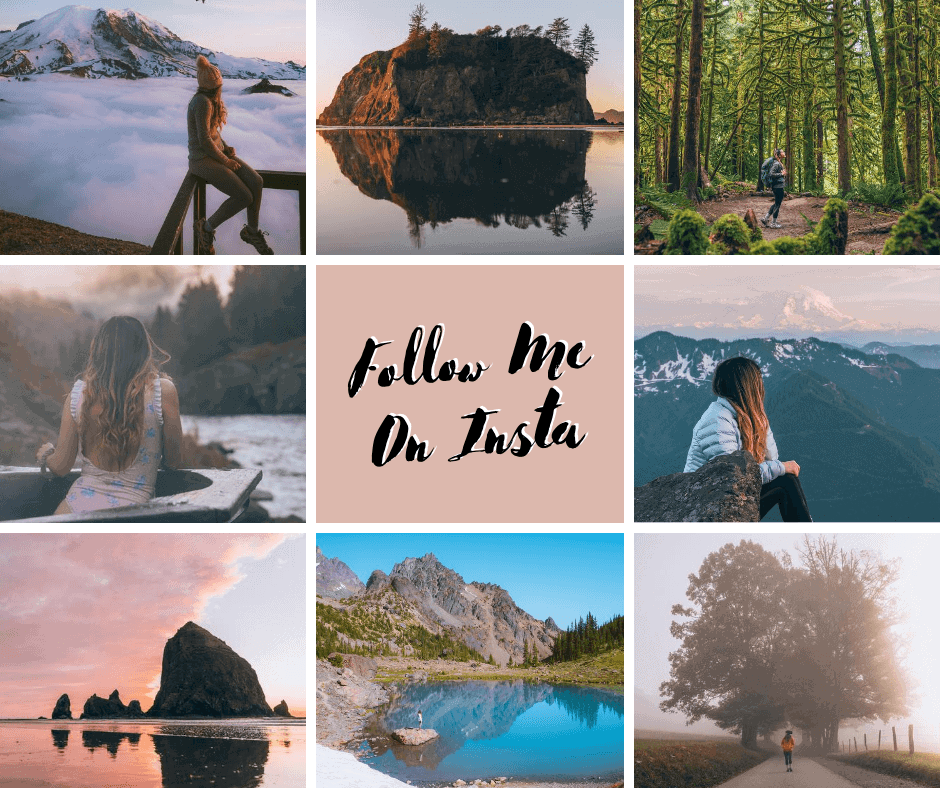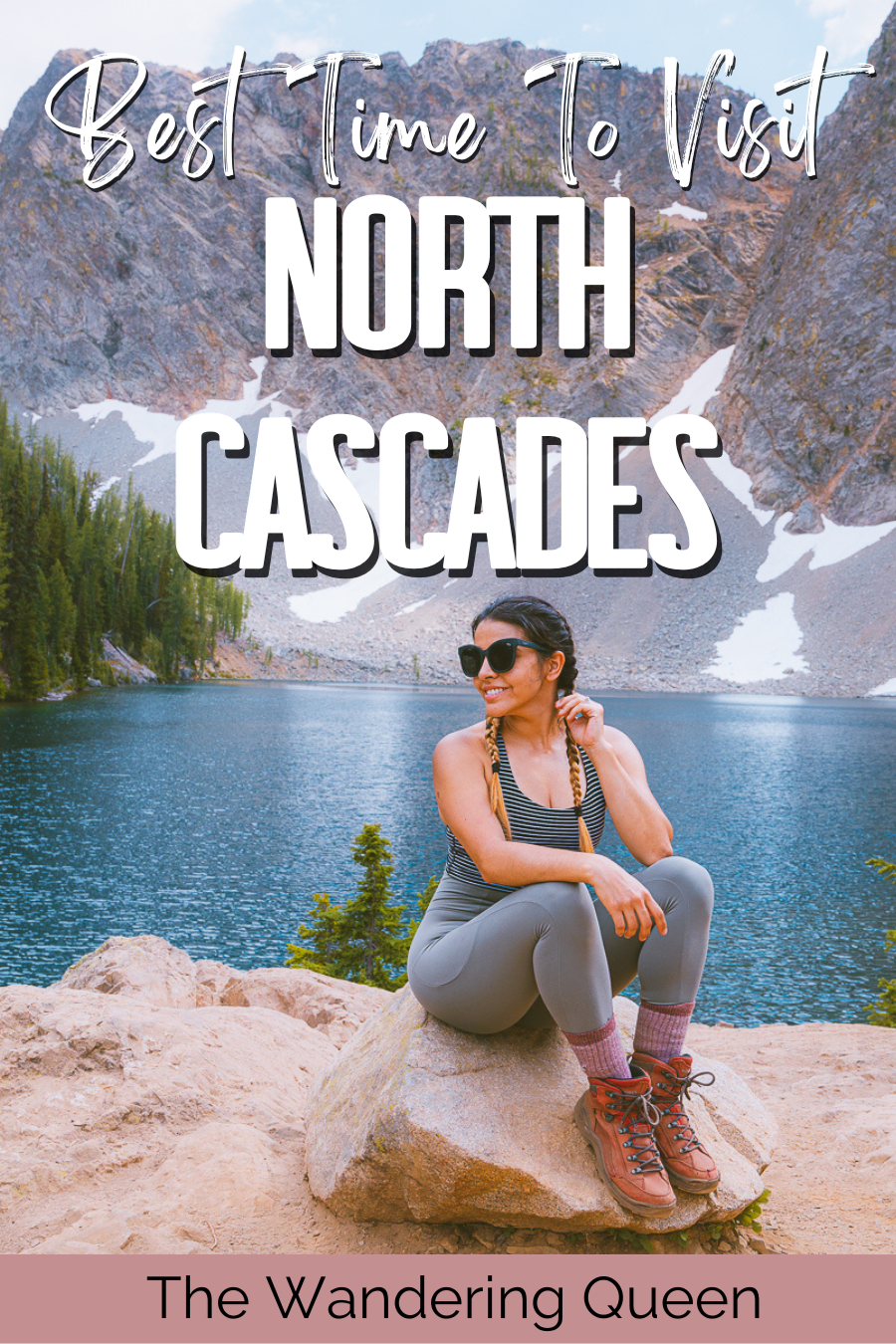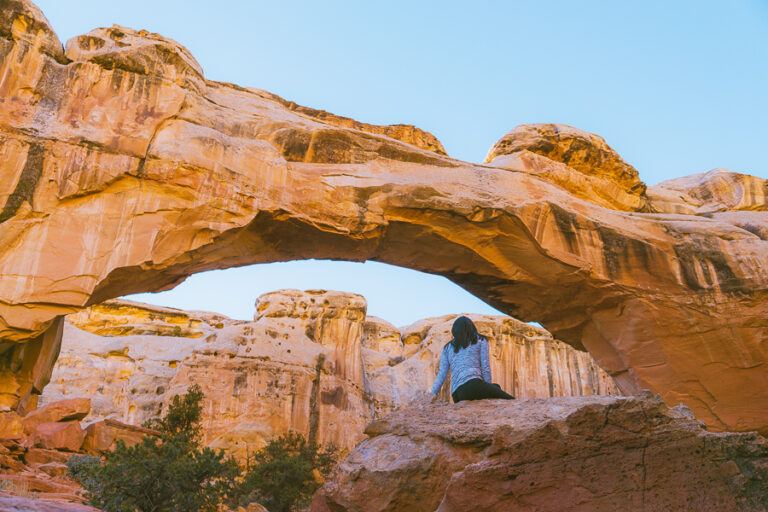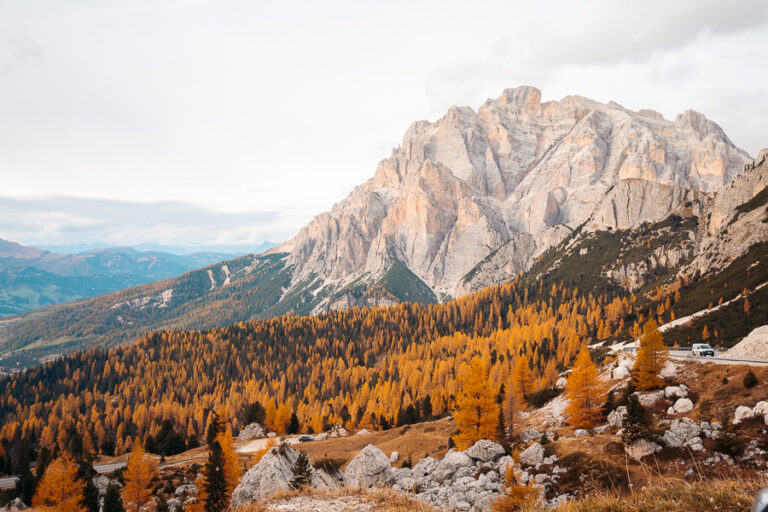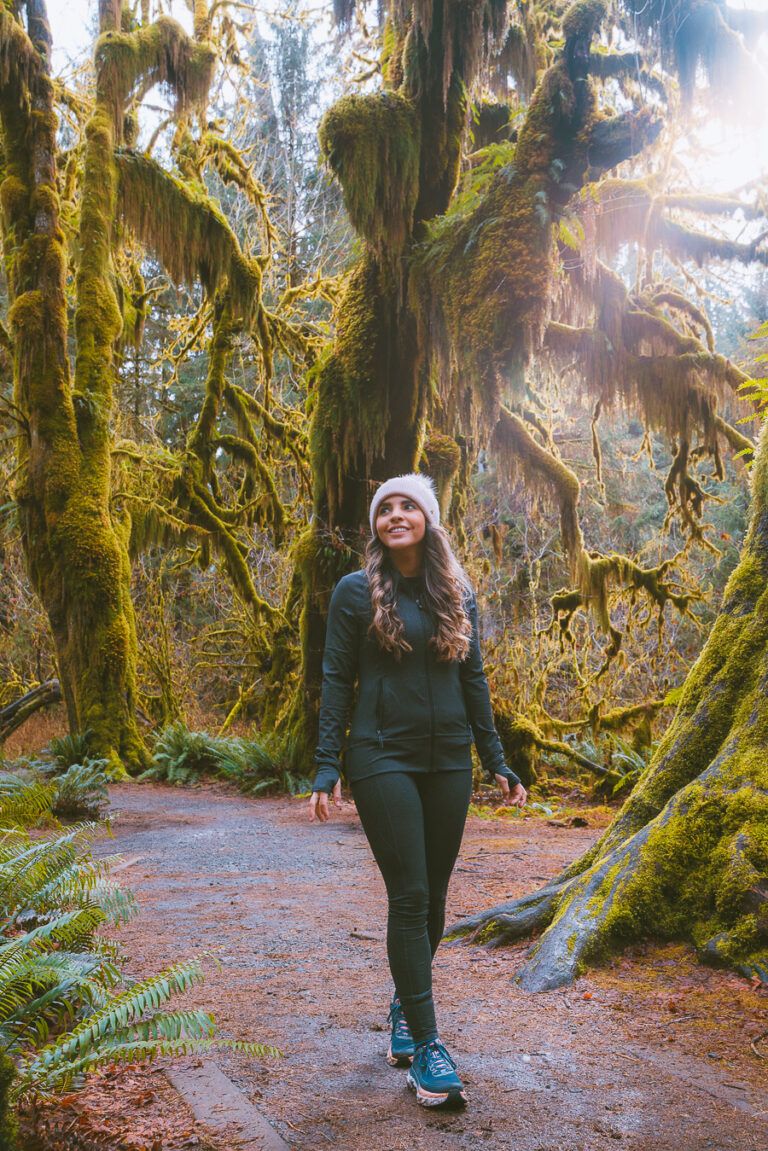Best Time to Visit North Cascades National Park 2024 Guide
Located in the stunning state of Washington is the North Cascades National Park. It’s a 500,000-acre area with an expansive glacial system, high flora biodiversity, magnificent views, turquoise waters, and even mountain goats.
While it may be one of Washington’s least visited national parks, its rugged alpine charm makes it a perfect getaway. There are also plenty of things to do in North Cascades; some are available year-round, and others are more season-specific.
But when is the best time to visit this national park? Below, you’ll find the ultimate guide for when to visit, as well as information on North Cascades National Park weather and seasons.
Without further ado, let’s get into the Best Time to Visit North Cascades National Park.
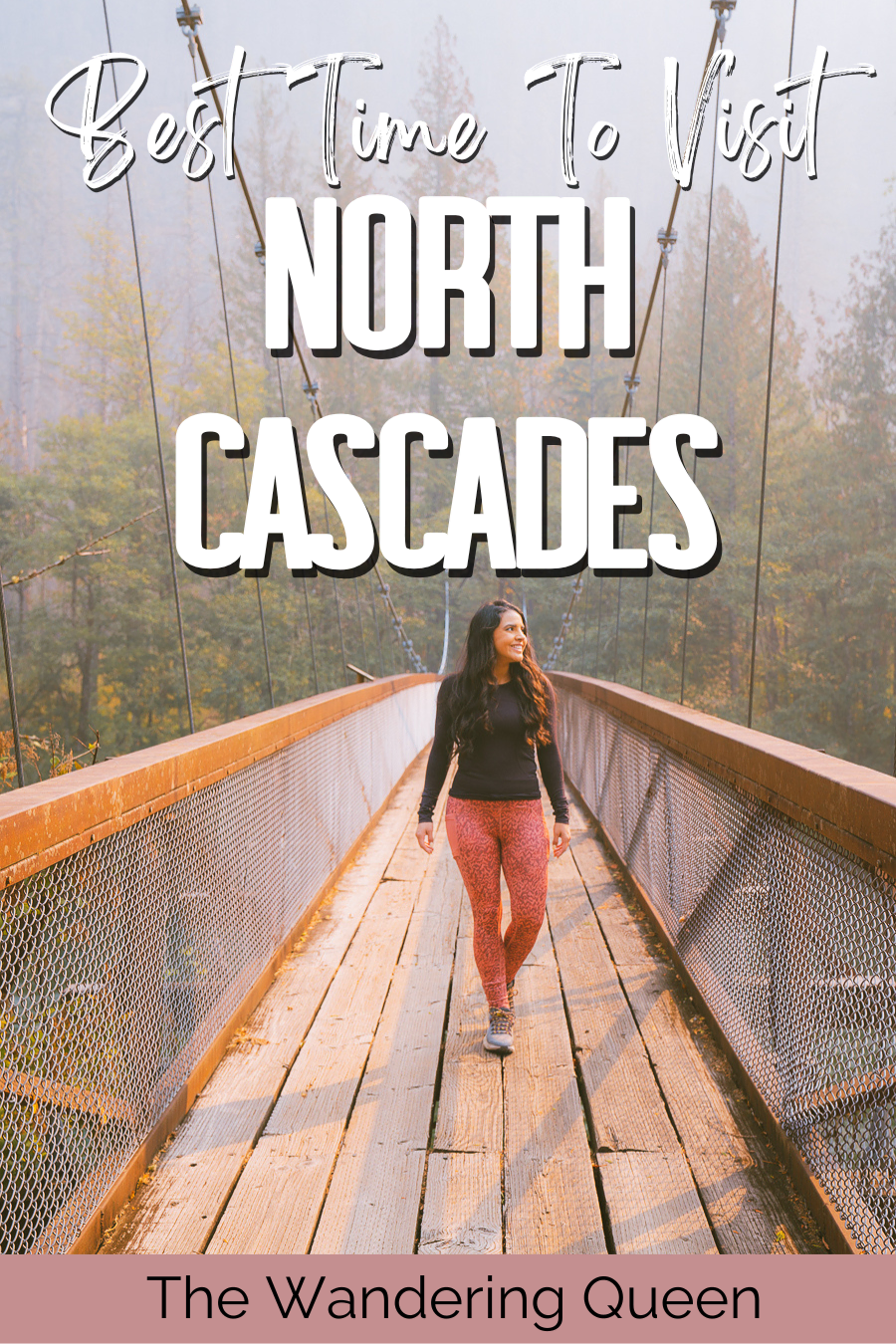
Disclosure: This post contains affiliate links. If you click one of them, I may receive a small commission (for which I am very grateful for) at no extra cost to you.
North Cascades National Park
Related Posts
How To Get to North Cascades National Park

North Cascades National Park is three hours from Seattle in northern Washington state, making Seattle-Tacoma International Airport (SEA) the closest starting point to the park. You’ll gain primary access to the North Cascades Highway (SR 20) from there. Your drive will be roughly 120 miles from the airport to the national park entrance.
If you’re driving from the west, take Interstate 5 to exit 230 to join the North Cascades Highway. Alternative routes include driving the Silver-Skagit Road and SR 542 for access to Copper Ridge and Hozomeen.
Best Time To Go to North Cascades National Park

The best time of year to visit North Cascades National Park is, without a doubt, from June to September. North Cascade National Park’s weather from summer to fall is the safest and most pleasant during these months.
The snow has melted at this time, and both low and high-elevation trails are open for hiking. You can also partake in many outdoor activities, such as camping, birdwatching, fishing, watersports, wildlife watching, and backpacking.
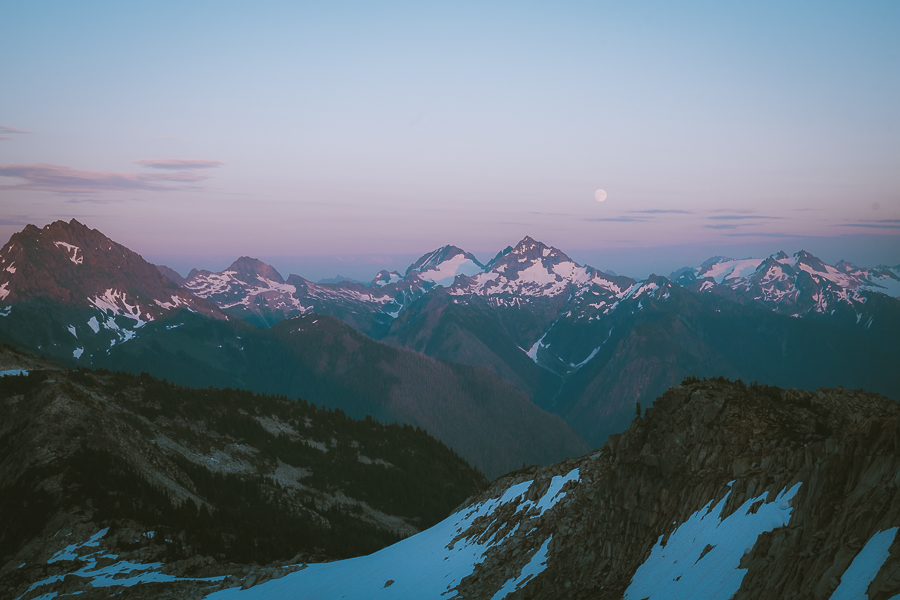
The peak season means that trails and campsites will be much busier, so be prepared. However, more and more people are visiting until November as the fall scenery, and fewer crowds are a big draw for some.
Worst Time To Go to North Cascades National Park
The worst months to visit are between December and March, mainly because the cold weather can pose dangers to the park visitors. The North Cascades Highway is usually closed during this time of year for safety purposes, which makes the park inaccessible for the most part.
The highway can remain closed until May, even if the park is technically open year-round. Additionally, you’ll find that trails and dirt roads may be covered with snow deep into summer, long after the highway is open.

Tip: Visiting during the highway closure? Take SR 530 over Loup Loup Pass or US 2 to Stevens Pass to get to the Cascades National Park.
Visiting North Cascades in Spring
Spring at North Cascades gradually warms after a crisp winter. As the snow melts, it welcomes budding vegetation and wildlife activity. Gorgeous wildflowers can be seen blooming at lower elevations.
Trails at higher elevations still deal with lingering snow, sometimes into the summer months, so your choice of hikes may be limited from March to May. During spring, temperatures typically range from 40°F to 60°F (4°C to 16°C).
Visiting the national park from late spring onwards is best, as Highway 20 is not typically open until April or May. Access to certain areas in the park, plus services and facilities, may also be limited during spring.
Things To Do in North Cascades in Spring
There’s still quite a bit you can do at North Cascades if you visit in spring, whether it be hiking, sightseeing, or wildlife viewing.
Gorge Creek Falls Trail
- Distance: 1 mile loop
- Elevation Gain: 59 feet
- Difficulty: Easy
- Trail Guide: Link
This is one of the best spring hikes in Washington if you want to see picturesque views on a moderate hike. You’ll travel through a quiet forest, and once you reach the halfway point, you’ll see the Gorge Lake and Gorge Dam on this short loop trail.

Tip: Look at what to wear when hiking in spring, as the weather at North Cascades can be unpredictable during this season.
Washington Pass Overlook

You’ll find the Washington Pass Overlook at milepost 162 on Highway 20 at its highest point and near the Blue Lake Trailhead. Enjoy the views of the towering mountains, such as Liberty Bell Mountain and Early Winters Spires, as well as the alpine scenery and snow-capped jagged mountains.

Tip: Get there early to get a parking spot when you visit.
Trail of the Cedars Nature Walk
- Distance: 0.6-mile out and back
- Elevation Gain: 26 feet
- Difficulty: Easy
- Trail Guide: Link
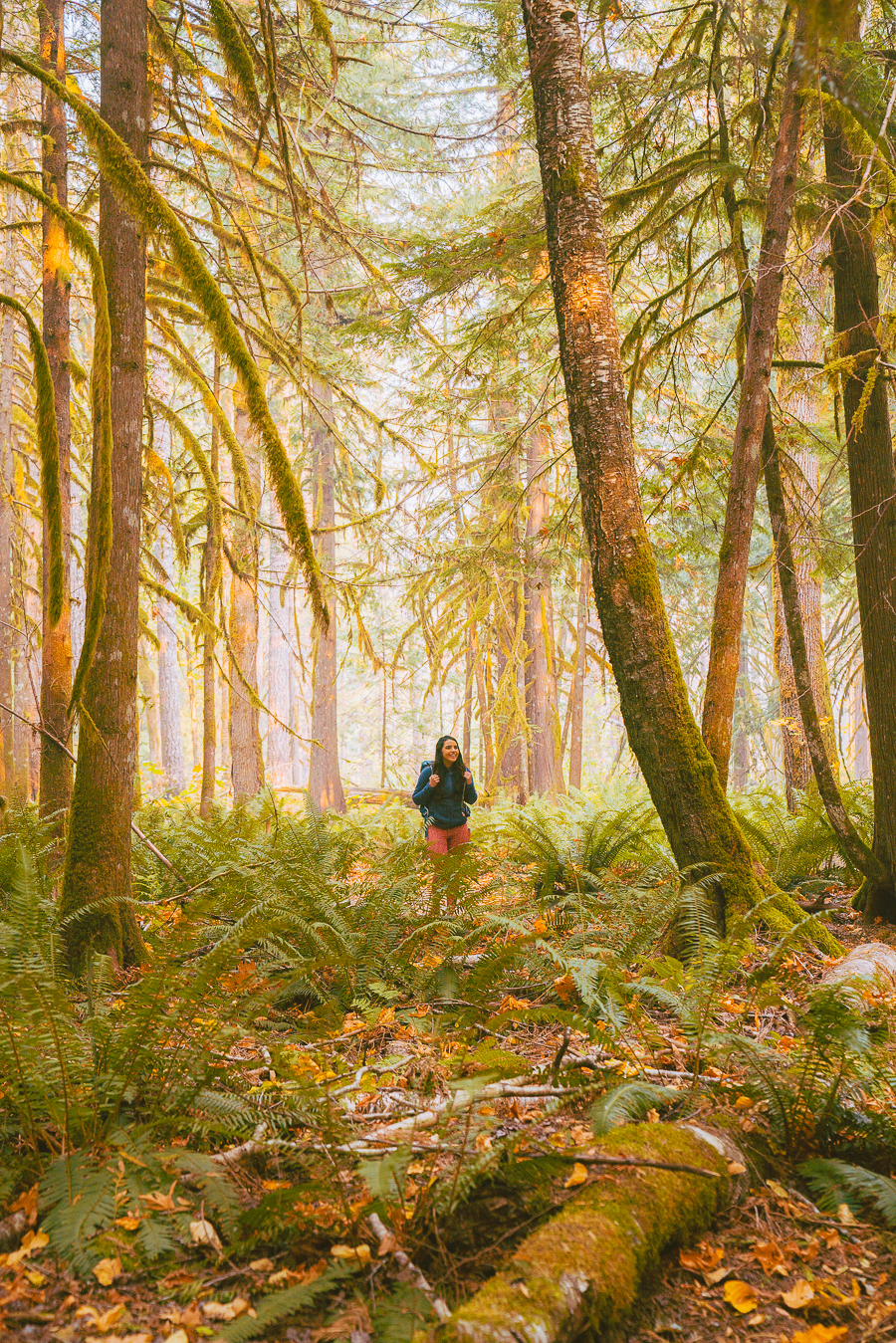
This easy out-and-back hike is excellent for explorers of every level. Enjoy the sounds of the flowing Skagit River as you meander through a lush forest canopy. And admire the cedar trees — many of which are hundreds of years old!
Visiting North Cascades in Summer
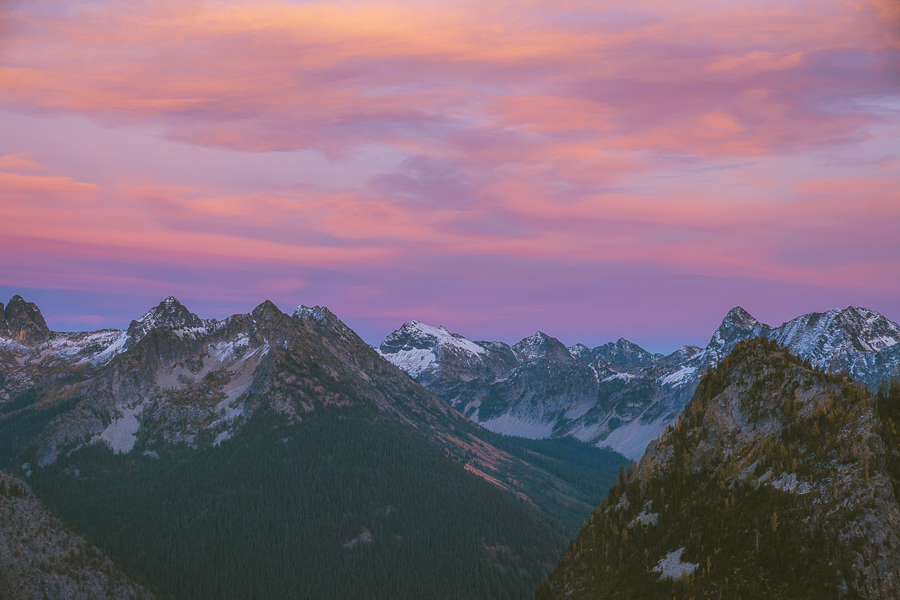
Summer is undoubtedly the best time to visit North Cascades National Park. The snow has melted, higher elevation hikes are safe to trek, and the glory of the park’s natural beauty is out in full force.
The entirety of the national park is open, and the gorgeous alpine meadows, wildflowers, and wildlife breathe color into the North Cascades. It’s no wonder why people love the summer period most.
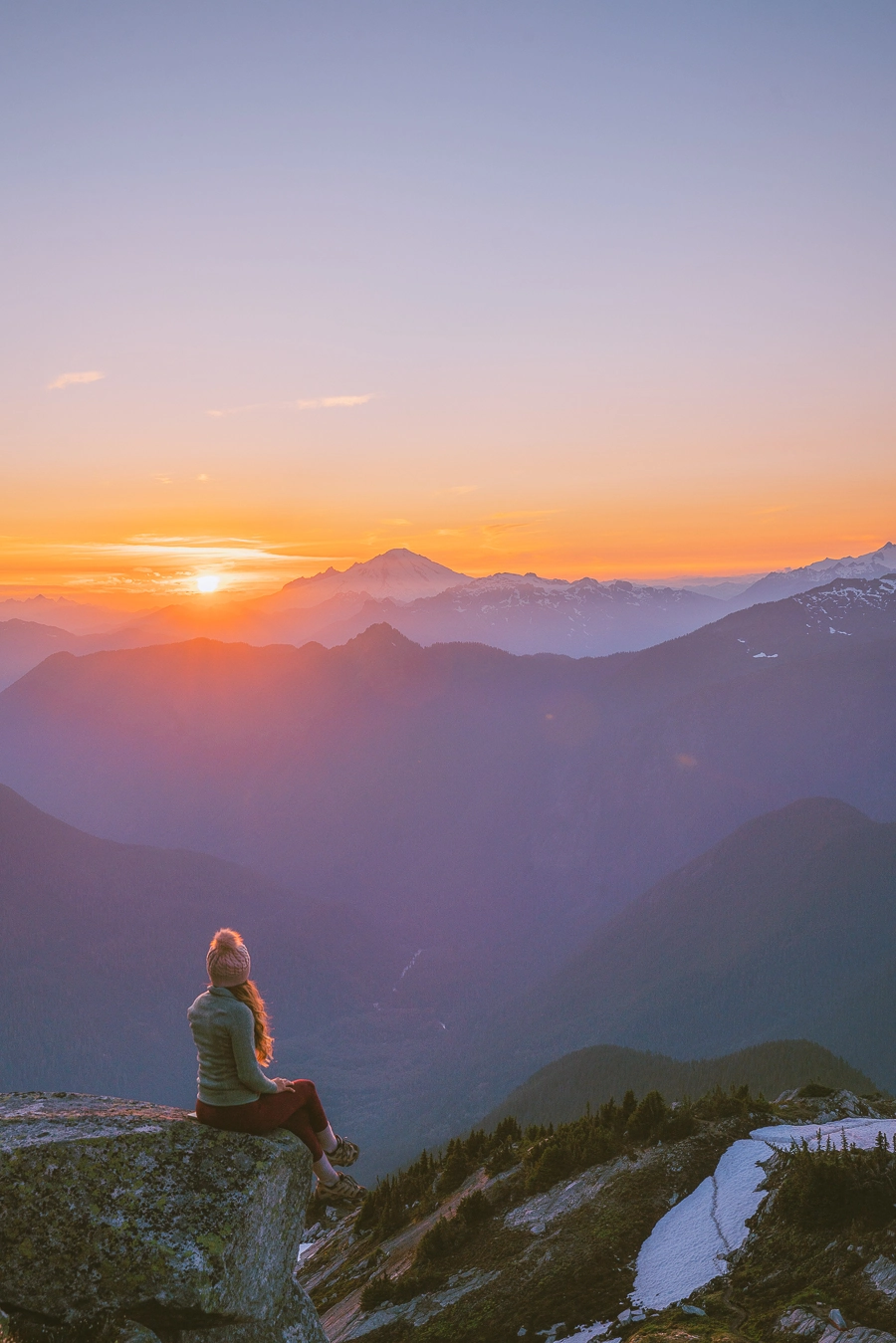
You’ll find that temperatures generally range from 60°F to 80°F (16°C to 27°C) during summer. And the weather is reliably good during the months of June to August.
Be prepared for popular trails to be crowded as the summer months bring in the most visitors.
Things To Do in North Cascades in Summer

You’ll have access to most, if not all, of the outdoor activities available at North Cascades National Park during the summer peak season.
Drive North Cascades Highway
The North Cascades Scenic Highway is a 30-mile drive across the North Cascades National Park and the main entry point for visitors. It’s also perfect for scenic drives that lead you through old-growth forests, mountain scenery, and glorious waterfalls.
The drive takes an hour, but you’ll likely spend more time stopping at iconic sights and exploring the surroundings. See Gorge Creek Falls, Diablo Lake Overlook, Happy Creek Forest Walk, and many more fascinating sights when you drive through the park.
Visit the Quiet Community of Stehekin
Located on Lake Chelan, the Stehekin community is hidden within the North Cascade National Park and can only be accessed by foot, boat, or plane. There is plenty to do there, from camping, hiking, lodging, and cultural and historical activities.
Be sure to visit sights like Rainbow Falls and North Cascades Lodge when there.
Hike Diablo Lake Trail
- Distance: 7.2 miles out and back
- Elevation Gain: 1,509 feet
- Difficulty: Moderate
- Trail Guide: Link
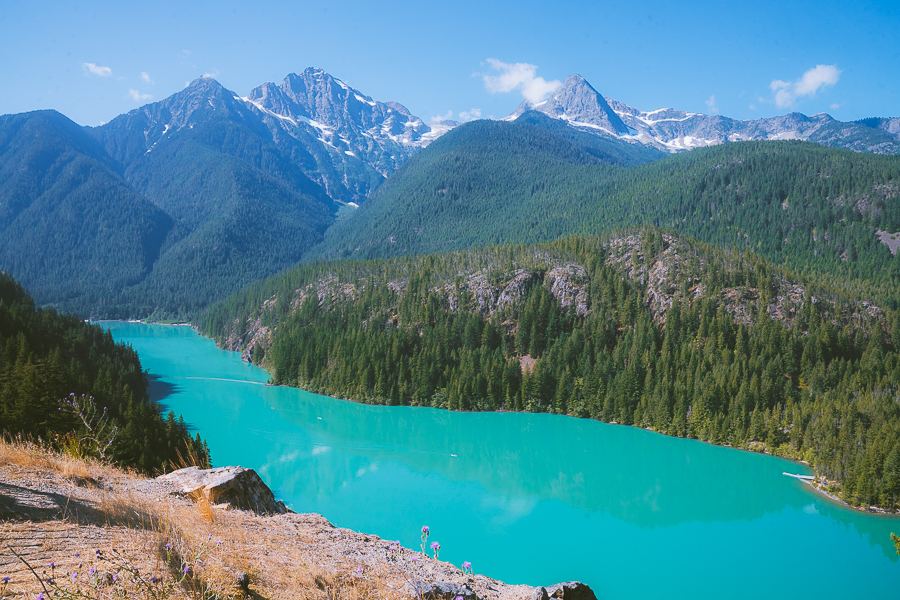
This moderate trail follows Diablo Lake, starts near Diablo Dam Road, and ends near the dry streambed of Deer Creek. It’s an excellent choice for a summer hike. You’ll see waterfalls, stunning views of Ross Lake, Colonial, Pyramid, and Davis Peaks, and views of the natural beauty surrounding this rocky trail.
Download my free Outdoor Photography Guide
Visiting North Cascades in the Fall

North Cascades is one of the best national parks to visit in the fall. Fall is becoming more popular to visit since September to November are generally less crowded.
The shoulder season boasts a stunning explosion of colors — reds, oranges, and golds from cottonwoods, aspens, and maples decorate the glacial park during this season. You can still enjoy high-elevation hikes, backpacking, and increased elk sightings.
Prepare for the slightly chilly weather ranging from 40°F to 60°F (4°C to 16°C) and the possibility of early snowfall. Certain services scale down at this time, and you may be unable to access areas where snow can cause potential dangers.
Things To Do in North Cascades in the Fall
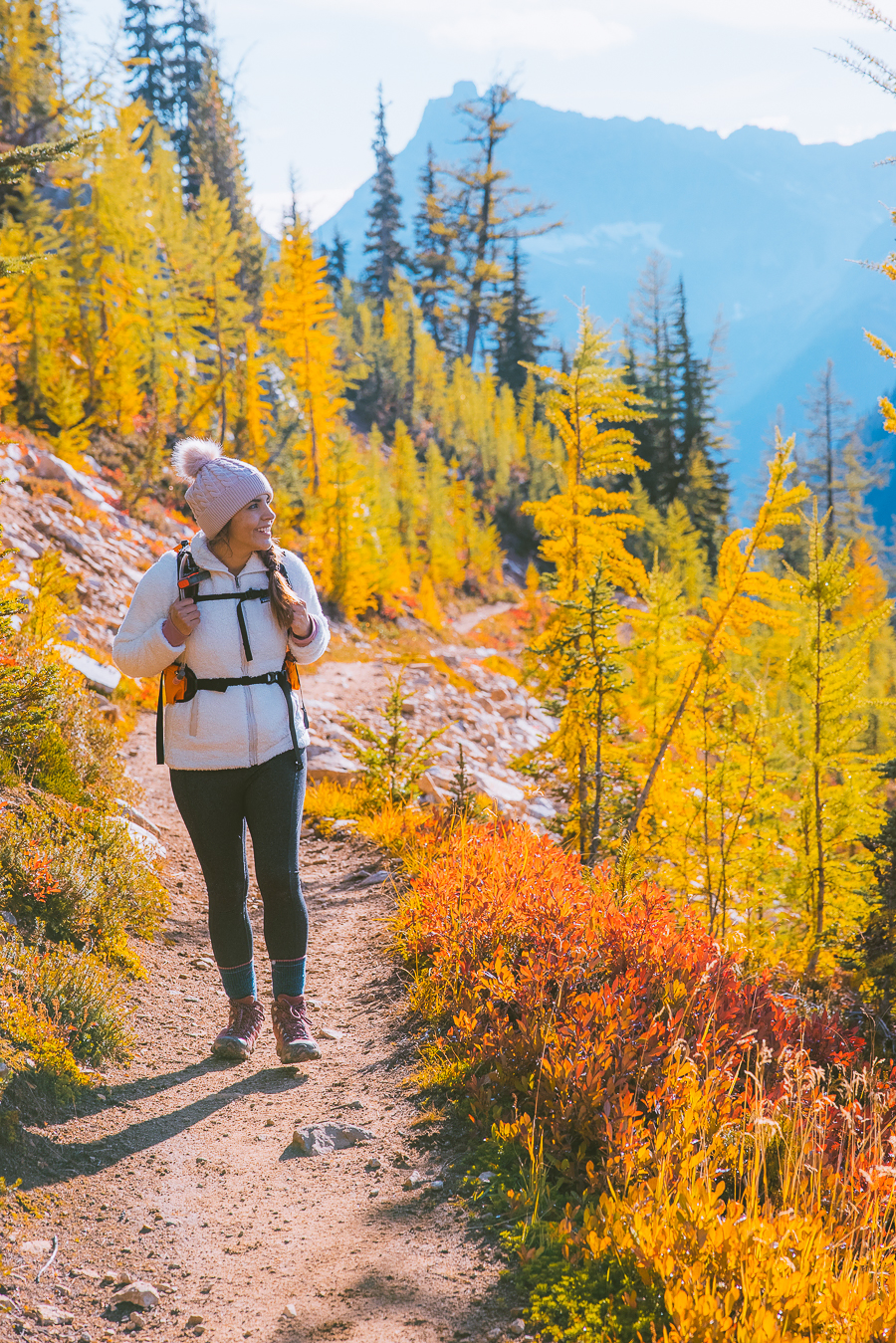
Even as temperatures drop as fall sets in, there are still many awesome things to do, like seeing the larches at Maple Pass or the glory of Diablo Lake.
Maple Pass Loop Hike
- Distance: 6.5-mile loop
- Elevation Gain: 2,162 feet
- Difficulty: Hard
- Trail Guide: Link

The Maple Pass Loop Hike is a quintessential fall hike that offers you a little of everything, from the colorful wildflowers to old-growth forests and panoramic views. It’s the best hike for seeing the yellowing larches (also known as tamaracks), a species of deciduous conifers that cover the alpine zones.
Read More: An Adventurous Guide to the Heather Maple Pass Loop Trail
Ross Lake Overlook
Head to mile marker 136 along the North Cascades Highway and stop at Ross Lake Overlook for breathtaking views of Ross Lake. From this viewpoint, you’ll see the lake’s southern end winding into the distance amongst the mountains.
From your vantage point, you’ll also see the famous Desolation Peak and a glimpse of North Cascades National Park’s beauty.
Cascade Pass and Sahale Arm Trail
- Distance: 11.6 miles out and back
- Elevation Gain: 3.963 feet
- Difficulty: Hard
- Trail Guide: Link
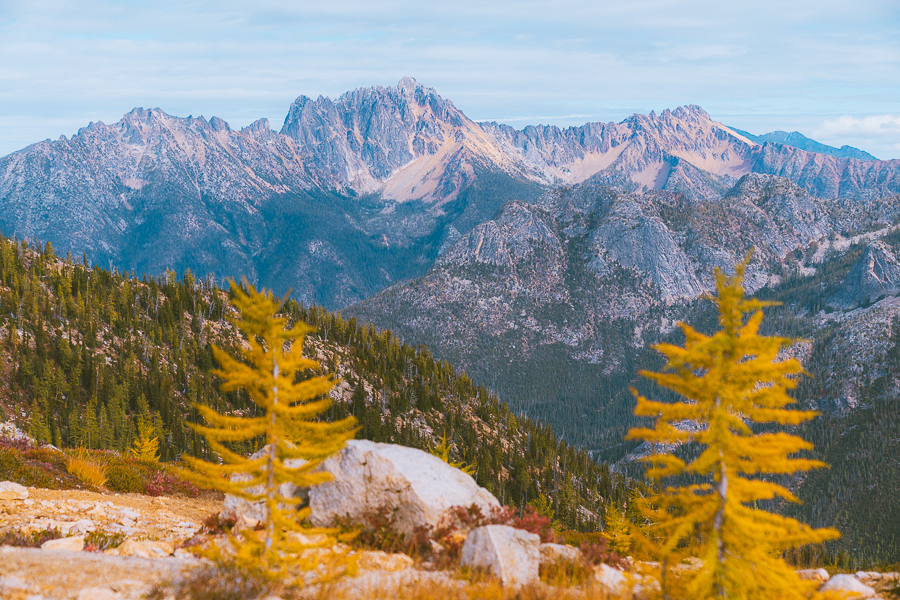
The Sahale Arm and Cascade Pass Trail is a challenging 11.6-mile out-and-back hike that shows off the evergreen forests, alpine meadows, and wildlife of the North Cascades.
You can turn around once you reach Cascade Pass, shortening the hike to seven miles. But you’ll want to do the entire trek down to the Sahale Glacier. You can stop at Sahale Glacier Camp, where you’ll see breathtaking views of Doubtful Lake and the views of the mountainous landscape.
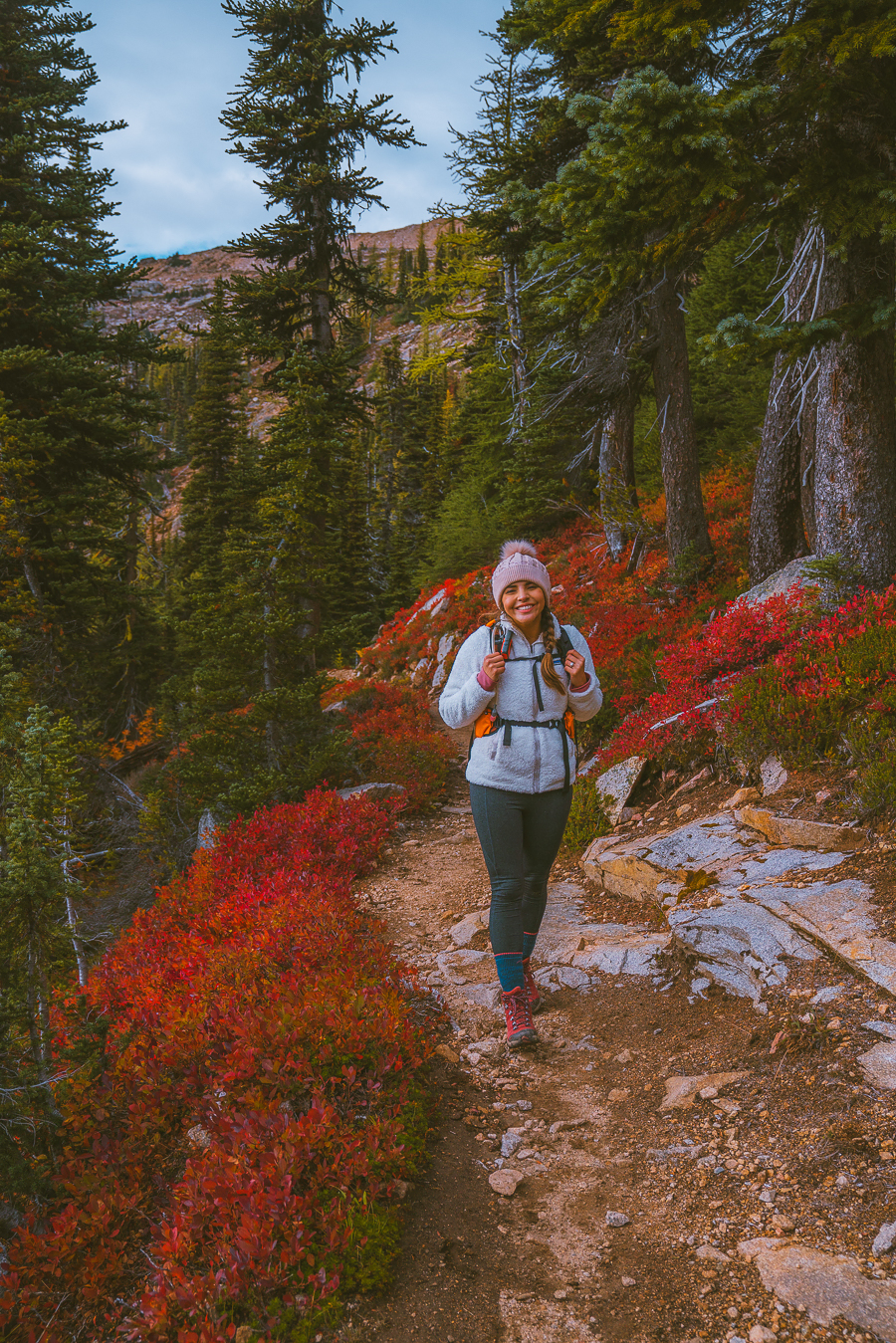
Visiting North Cascades in Winter
North Cascades’ winter is undoubtedly an alpine wonderland. You’ll see the snow-capped peaks of the Cascade Mountains, the presence of fluffy, white mountain goats, and the stunning glaciers.
Many outdoor enthusiasts enjoy skiing, snowshoeing, and snowmobiling during this period. However, this weather is not the most suitable for camping as average temperatures can range from 20°F to 40°F (-7°C to 4°C).
Given the avalanche risk due to heavy snow and steep terrain, the main road through the park, Route 20, remains closed in the winter. However, you can enter by skiing, snowshoeing, or going backcountry camping, but experienced travelers generally favor this approach.

Tip: Remember to wear warm clothing, preferably waterproof layers, when braving the great outdoors of Cascades National Park.
Things to Do in North Cascades in Winter
While many high-elevation trails are snow-covered and restricted during winter, that doesn’t mean there aren’t things to do while visiting the national park in winter.
Diablo Lake Vista Point
While visiting the turquoise waters of Diablo Lake is a year-round delight, Diablo Lake in winter is a stunning sight with its snow-dusted banks and crystalline waters. The best vantage point to absorb the awe-inspiring sights of the lake is at Diablo Lake Vista Point.
It is located at marker 132 on Highway 20 above the lake.
Thunder Knob Trail
- Distance: 3.4 miles out and back
- Elevation Gain: 675 feet
- Difficulty: Moderate
- Trail Guide: Link
Thunder Knob Trail is still safe to hike in early winter and is a great family-friendly option with stunning views of Diablo Lake. Accessible from Colonial Creek Campground at milepost 130, all types of hikers can enjoy the low-elevation hike.
However, remember to keep a keen eye on weather forecasts before hiking during the snowy season at North Cascades.
Grab Your Free Car Camping Checklist! 🚗🌲
Ready to elevate your car camping game? Snag our essential checklist to ensure you’ve got everything you need for a stress-free, fun-filled adventure! Perfect for beginners and seasoned campers alike. Download now and hit the road prepared! 🌟🎒
Gorge Lake Overlook & Gorge Creek Falls
Located between Diablo Lake and the Trail of the Cedars, this must-visit spot offers views of the Gorge Dam and the Skagit Gorge. From the overlook, you can see the jade-green Gorge Lake.
Walk the Gorge Creek Falls bridge and take in the gorgeous sights of the waterfall from the metal grate suspended above the river.
FAQs About the North Cascades Best Time to Visit

Do you have some lingering questions about when to visit North Cascades National Park? Have a look at the answers to these commonly asked questions.
How Many Days in North Cascades National Park Is Enough?
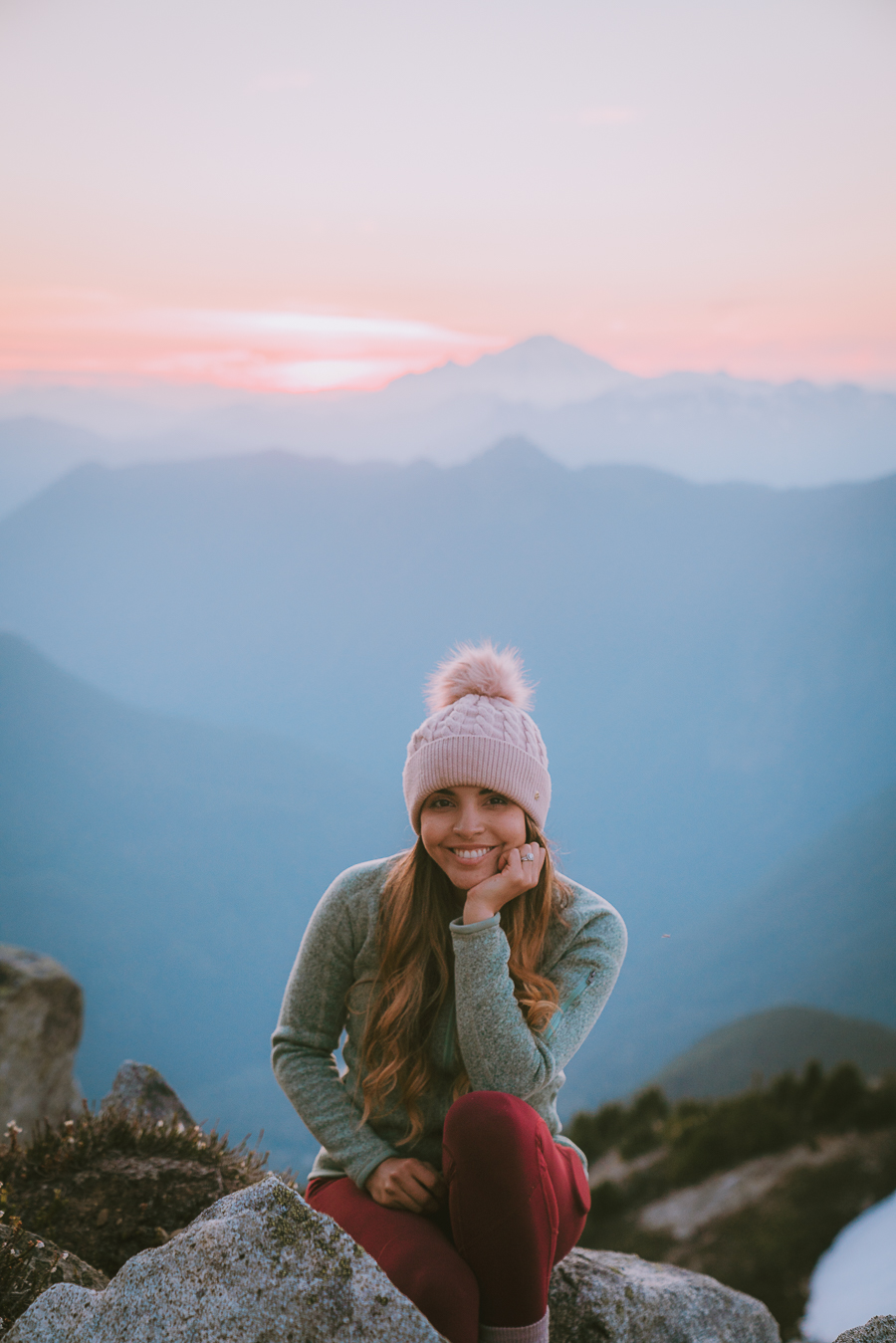
One to two days will suffice for most visitors as the North Cascades area is slightly smaller than larger national parks like Olympic and Mt Rainier. However, if you’re interested in camping at Colonial Creek Campground or staying at Stehekin, you may want to spend up to four days there.
Is North Cascades Park Free to Enter?
Yes! North Cascades doesn’t have an entry fee. But if you plan to camp overnight in one of the backcountry campsites, you need a backcountry permit.
Is North Cascades Park Open Year-round?
Technically, yes, the Cascades National Park Complex is open year-round. However, due to safety concerns, the North Cascades Highway or Highway 20 is often closed from December to May as avalanche threats are high. You’ll also encounter minimal access and few services available from late September through May.
Wrapping Up the Best Time to Visit Cascades National Park
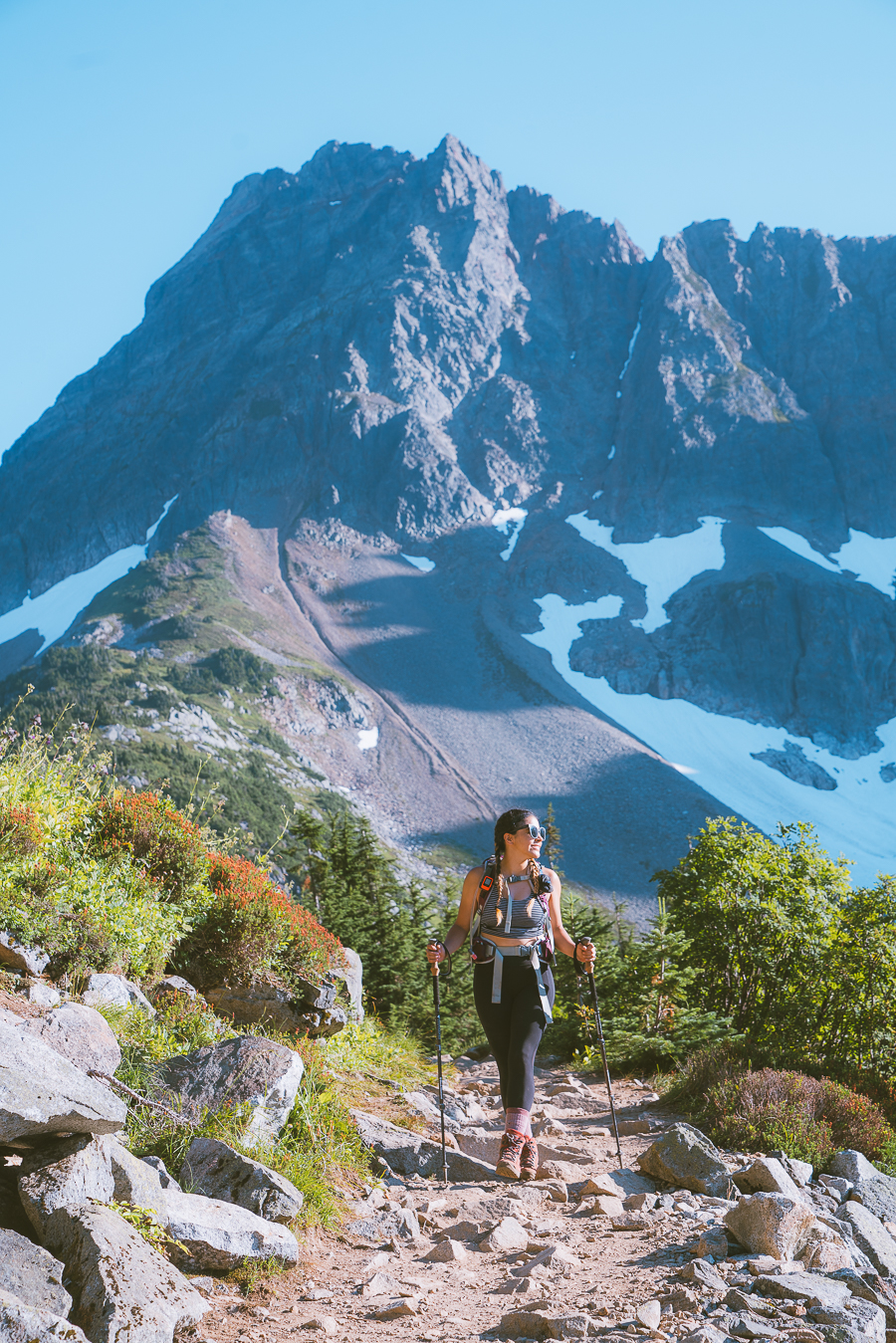
There you have it — the best time to visit North Cascades National Park. Ultimately, when you go is up to you and your preferences. However, the most popular and comfortable time to visit the park is June to September. With its endless hiking trails, evergreen forests, and glacial lakes, the North Cascades National Park is a gem waiting to be discovered.
Next Read: Check out this Washington road trip itinerary and add some of the best things to do in Washington state to your next adventure.




